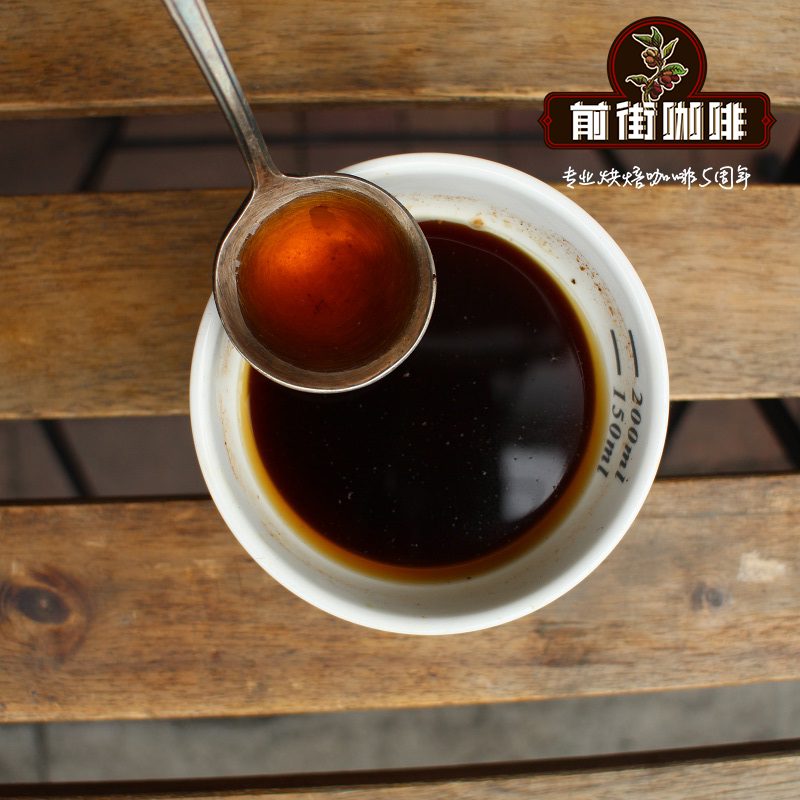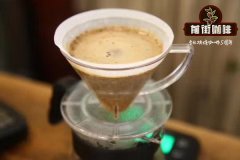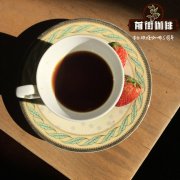What kind of baristas are baristas at La Huerta Orchard Farm in Santa Barbara, Honduras? What's the wind?

Professional coffee knowledge exchange more coffee bean information please follow the coffee workshop (Wechat official account cafe_style)
What kind of baristas are baristas at La Huerta Orchard Farm in Santa Barbara, Honduras? What flavor and taste do you have?
Honduras is the place where boutique coffee has a fever in recent years, and several villages in the Santa Barbara Mountains surround the St. Vincent Water washing Plant, overlooking the high-altitude hillside of Lake Yojoa. Oden and Tim Wendelboe chose Santa Barbara as the first choice of Central and South American beans outside Ethiopia and Kenya. This "La Huerta" is no exception, from a village near Santa Barbara. The owner of the orchard farm (La Huerta) is George Lanza (Jorge Lanza). George and his wife Maria have grown coffee for 30 years, but in the past it was grown in the lower elevations of Santa Barbara and the coffee was not particularly outstanding. In 2010, in pursuit of higher quality, the couple bought a high-altitude orchard farm, located in the famous Las Flores village, between 1600 and 1800 meters above sea level, which is the Santa Barbara Super Cup Champion settlement area, with a pleasant scenery and excellent microclimate, overlooking Yojoa Lake from the mountain.
The Santa Barbara Mountains are rich in insects, fish, birds and animals, full of primeval forests and the source of Yojoa Lake at the foot of the mountain. Lanza and his wife bought a farm covering an area of 20 hectares and planted different kinds of beans, such as Catuai, Pacas, Bourbon and Pacamara, to implement the ecological farming method. During the harvest season, there will be 30 household workers to help harvest, handle, dry and screen. Drying is the natural sun on an African-style elevated shed bed.
In 2012, the orchard farm had its first harvest, and they took part in the extraordinary Cup, but they didn't even pass the domestic judges. But that year, world champion Sasa Sestic went to Honduras to look for raw beans. On the last day of the cup test, he found George Lanza's coffee very much. Although it was only his first harvest, he was impressed by the outstanding flavor. Sasa not only bought the batch, but also encouraged George to continue to participate in the extraordinary Cup.
No one expected that Kaduai, the second harvest of the orchard farm, won the championship with a record-breaking score of 92.75 in the 2013 extraordinary Cup.
Since 2012, Ona has continued to assist orchard farms to improve coffee quality by carrying out more experiments and controls from harvesting, sugar testing and drying procedures, hoping to improve cup test scores and challenge the limits of extraordinary cups.
In 2013, the atmosphere of the coffee industry in Honduras was quite depressed. Plagiarism caused the annual output to drop by more than 30%. Compared with the glorious history of 2012, it showed a strong contrast, dealt a heavy blow to the economy and caused huge social problems. The exception is high-altitude boutique coffee farmers.
Not only is the quality still bright, but the impact of the disease is very slight. Apart from the high altitude (most of which are more than 1650 meters), proper manor management and pre-prevention are the main reasons for avoiding havoc.
According to IHCAFE data, Honduran coffee can be divided into six major producing areas, mainly located in western and southern Copan, Opalaca, Montecillos, Comayagua, Agalta Tropical and El Paraiso. The average height of high-quality products is more than 1100 meters above sea level. 69% of the coffee grown in these areas is HG, and 12% is SHG,19% and CS. The main varieties are Typica, Bourbon, Caturra, Villa Sarchi and Lempira. At present, the main grades are still according to altitude, Hongguo coffee grade and height.
Producing country: Honduras, Honduras
Producing area: baihua Village Las Flores; Santa Barbara Santa B á rbara
Manor: Orchard Farm La Huerta
Owner: George Lanza Jorge Alberto Lanza Ruiz
Altitude: 1650 m
Bean seed: Kaduai Catuai
Treatment: Natural in the sun
Harvest time: 2016
Award winning record: 2013 Honduras extraordinary Cup Cup of Excellence champion
Flavor: famous for its bright acidity and meticulous sweetness, with honey and changeable sweetness such as caramel or spice sweetness, while greasy and rising aromas are even more pleasing! The overall balance is very good, and it is well worth trying. Very clean, honey, chocolate, grapes, apples, good sense of oil, vanilla plants, lemon, cherry, nut chocolate, caramel sweet, sweet aftertaste with rich greasy and sweet spices
Qianjie recommended cooking:
Filter cup: KONO filter cup
Water temperature: 88 degrees
Degree of grinding: small Fuji degree of grinding 4
Cooking method: the ratio of water to flour is 1:14, 17g powder, 25g water for the first time, steaming for 30s, and 238g water for the second time. The extraction time is about 2:30 seconds.
Analysis: there are not many ribs at the bottom of the Kono cup, and the filter paper clings to the filter cup to achieve the purpose of limiting air flow, which can make water and coffee powder have longer contact soaking time in the filter cup and ensure the extraction time and extraction rate of rough grinding. In this way, the coffee powder can be fully extracted, enhance the mellow taste and make the taste more concentrated.
Flavor: well balanced, clean, thick and solid on the palate, with a long dark chocolate finish.
Important Notice :
前街咖啡 FrontStreet Coffee has moved to new addredd:
FrontStreet Coffee Address: 315,Donghua East Road,GuangZhou
Tel:020 38364473
- Prev

The development of coffee in India-what are the main growing areas of coffee?
Professional coffee knowledge exchange more information about coffee beans Please follow the coffee workshop (Wechat official account cafe_style) the growth and decline of India's coffee industry like Indonesian coffee, India's coffee industry has experienced ups and downs. This has led to huge wealth fluctuations in India's coffee industry. At first, most of the commercial coffee planted in Arabica, and the plantations are mainly distributed today.
- Next

What are the characteristics of Indian coffee? What kind of fine coffee do you have in Indian coffee?
Professional coffee knowledge exchange more coffee bean information please pay attention to the coffee workshop (Wechat official account cafe_style) coffee characteristics: 1, the overall taste of Indian coffee mild, low acidity and high quality, with a strong exotic tone and strong aroma, full-bodied spice, lingering finish. It is praised as the best light coffee in the world. 2. Growth conditions: gas in coffee growing areas in India
Related
- Detailed explanation of Jadeite planting Land in Panamanian Jadeite Manor introduction to the grading system of Jadeite competitive bidding, Red bid, Green bid and Rose Summer
- Story of Coffee planting in Brenka region of Costa Rica Stonehenge Manor anaerobic heavy honey treatment of flavor mouth
- What's on the barrel of Blue Mountain Coffee beans?
- Can American coffee also pull flowers? How to use hot American style to pull out a good-looking pattern?
- Can you make a cold extract with coffee beans? What is the right proportion for cold-extracted coffee formula?
- Indonesian PWN Gold Mandrine Coffee Origin Features Flavor How to Chong? Mandolin coffee is American.
- A brief introduction to the flavor characteristics of Brazilian yellow bourbon coffee beans
- What is the effect of different water quality on the flavor of cold-extracted coffee? What kind of water is best for brewing coffee?
- Why do you think of Rose Summer whenever you mention Panamanian coffee?
- Introduction to the characteristics of authentic blue mountain coffee bean producing areas? What is the CIB Coffee Authority in Jamaica?

